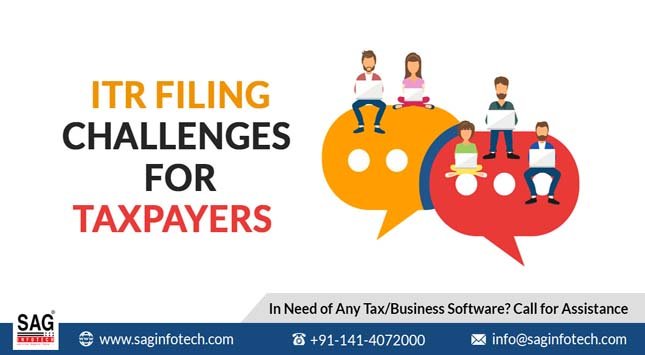Introduction
Tax compliance is complex for many human beings and organizations, mainly in the context of changing guidelines, globalization, and digitalization.
Conversely, a generation might also provide innovative answers for simplifying and streamlining ITR filing and enjoyable tax responsibilities.
In this blog, we will look at several growing generation trends that are converting the future of ITR filing and tax compliance in India.
How will Tech Innovations Transform Tax Compliance?
The following are some benefits tax compliance will get from tech innovations:
Artificial Intelligence and Machine Learning
AI and ML force transformative changes in diverse sectors, and tax compliance is no exception. This technology can automate the facts collection and analysis system, minimizing errors and saving time for taxpayers.
AI-powered chatbots can offer actual-time assistance and solution queries related to tax filing, making it easier for individuals to navigate complex tax guidelines.
Machine learning algorithms can analyze ancient tax data to pick out styles and help taxpayers optimize their deductions and tax-making plans techniques. By leveraging AI and ML, tax compliance will become customized, correct, and reliable.
Data-Centric Approach
A records-centric method helps near gaps and leverage ignored opportunities without increasing taxation. An example of a statistics-centric technique is verifying the tax compliance of citizens in search of tax relief from the latest announcements by reading the information in their initial filings.
Enhanced Tax Filing Experience
Digital technology provides a higher level of experience for taxpayers as they can complete their entire filing process in less time and avoid penalties for late filing of ITR. Besides, this technology also lessens the number of bills a taxpayer must make in 12 months.
Prevention of Fraud and Evasion
Technology also enables the ITR department to detect and save you from tax fraud and evasion. It additionally simplifies tax compliance solutions for companies and directors.
Robotic Process Automation (RPA)
RPA is leveraged to automate repetitive, rule-based techniques in tax administration. Automation reduces human errors, increases velocity, and complements efficacy. It additionally frees up tax specialists’ time for high-skill tasks.
These technologies, whether or not followed individually or in combination, beautify taxpayers’ delight, empower tax businesses, and optimize services. RPA can also enable seamless system integration, and green statistics switch and synchronization. With RPA, taxpayers can count on full-size time savings and progressed accuracy in their ITR filing.
Data Analytics and Data Visualization
The abundance of digital statistics has spread out new opportunities for tax compliance via statistics analytics and visualization tools. By studying big volumes of based and unstructured statistics, the government can become more aware of patterns and anomalies.
Advanced analytics can also help us anticipate tax liabilities primarily based on historical tendencies and taxpayer behavior. Data visualization strategies, including interactive dashboards and graphical representations, can simplify complicated tax records and make them extra handy to taxpayers. These tools enable people to become aware of opportunities for tax optimization and make knowledgeable choices.
Transparency Through E-Platforms
Electronic systems for tax registration, filing, payment, etc., offer transparency to taxpayers. They may be confident that their tax payments are deposited in authorities’ bills.
Mobile Applications and Cloud Computing
Mobile packages have transformed diverse components of our lives, and tax compliance is no different. Mobile apps can offer a user-friendly interface for taxpayers to complete their ITR filing, tune their refunds, and get hold of updates from tax authorities.
They can also offer features like record scanning and steady garage, permitting users to capture and save tax-associated documents at the cross. Cloud computing is vital in helping those cellular programs, bearing in mind a scalable and steady garage of extensive quantities of records. With the help of cell apps and cloud computing, taxpayers can access their tax information whenever, anywhere, and seamlessly collaborate with tax professionals or authorities.
Final Thoughts
In the twenty-first century, technological breakthroughs have transformed how tax compliance is handled and delivered. Tax administrations progressively use digital technologies such as e-filing, artificial intelligence, behavioral insights, and data analytics to increase tax collecting efficiency, effectiveness, and justice.
Taxpayers gain from simplifying tax duties, decreasing administrative hassles, and boosting trust. However, technological advancements provide new difficulties and possibilities for tax departments, such as adjusting to new business models, safeguarding data privacy and security, and utilizing tax technology as a strategic enabler.
As a result, tax compliance is a question of adhering to the regulations while embracing the change and creativity technology offers to the tax sector.

